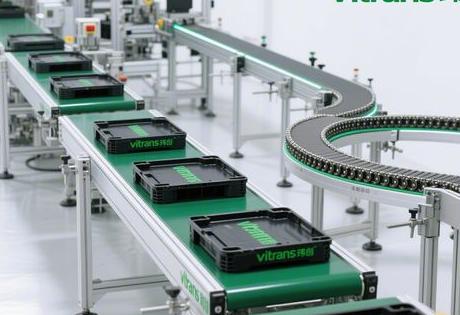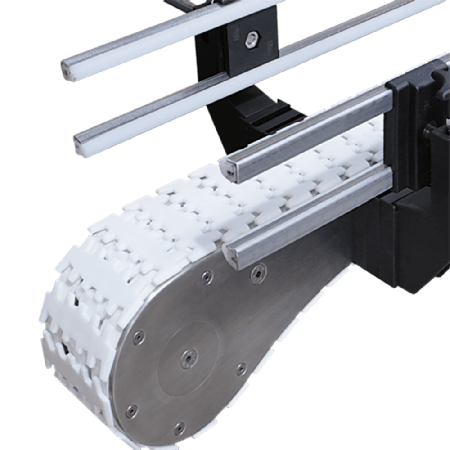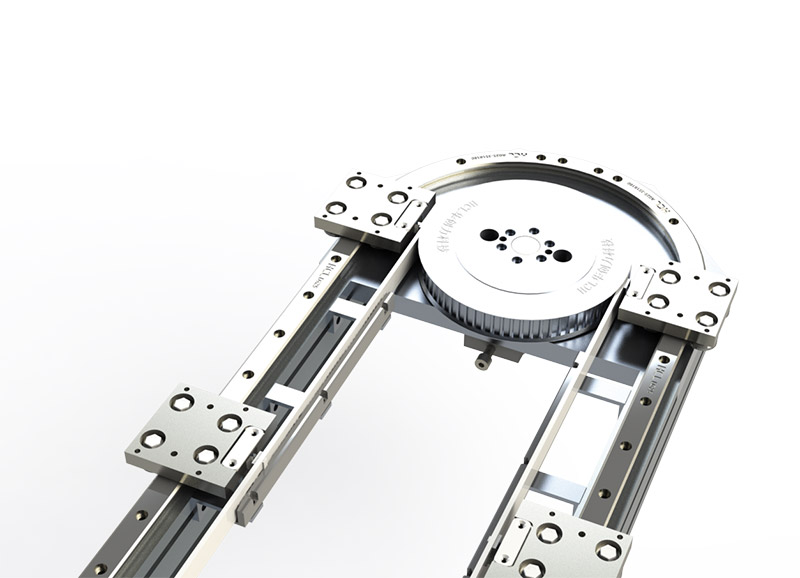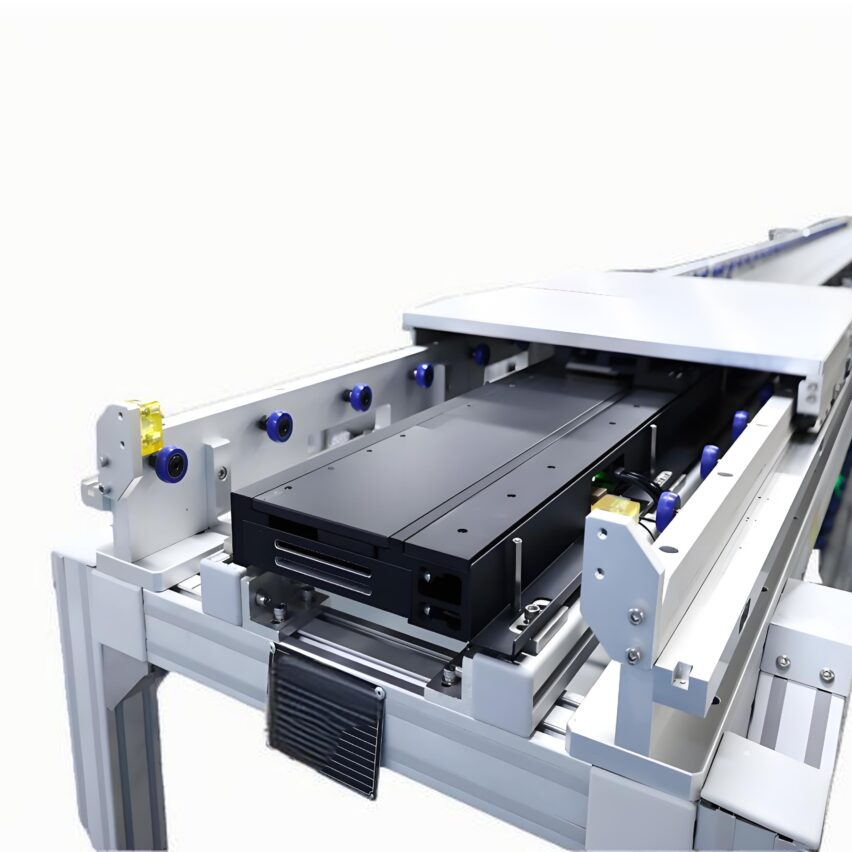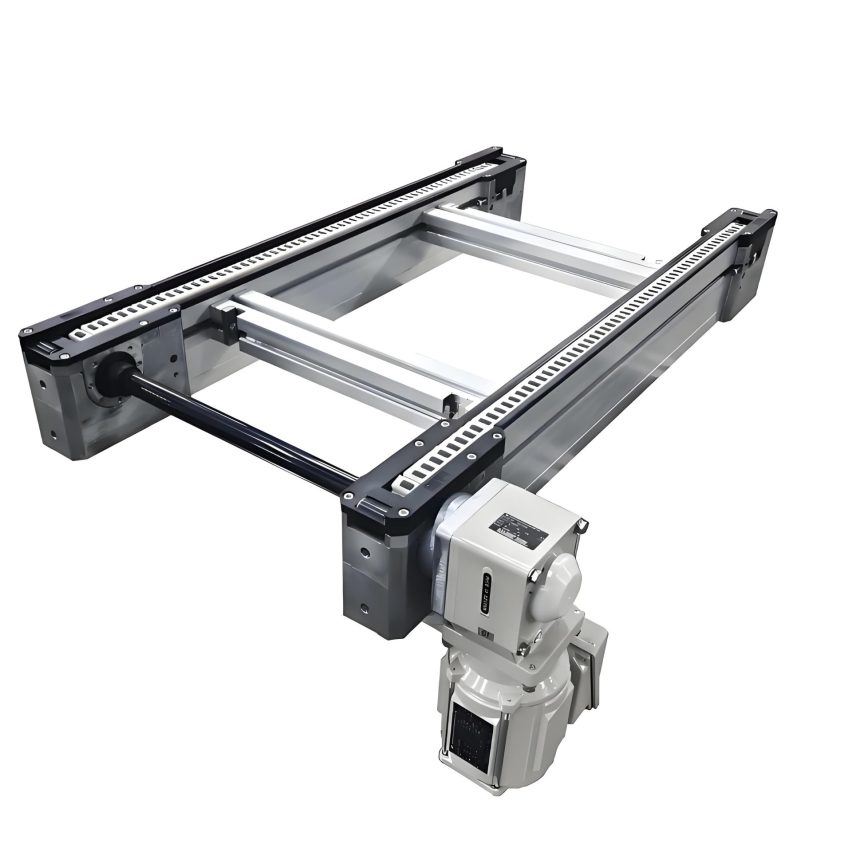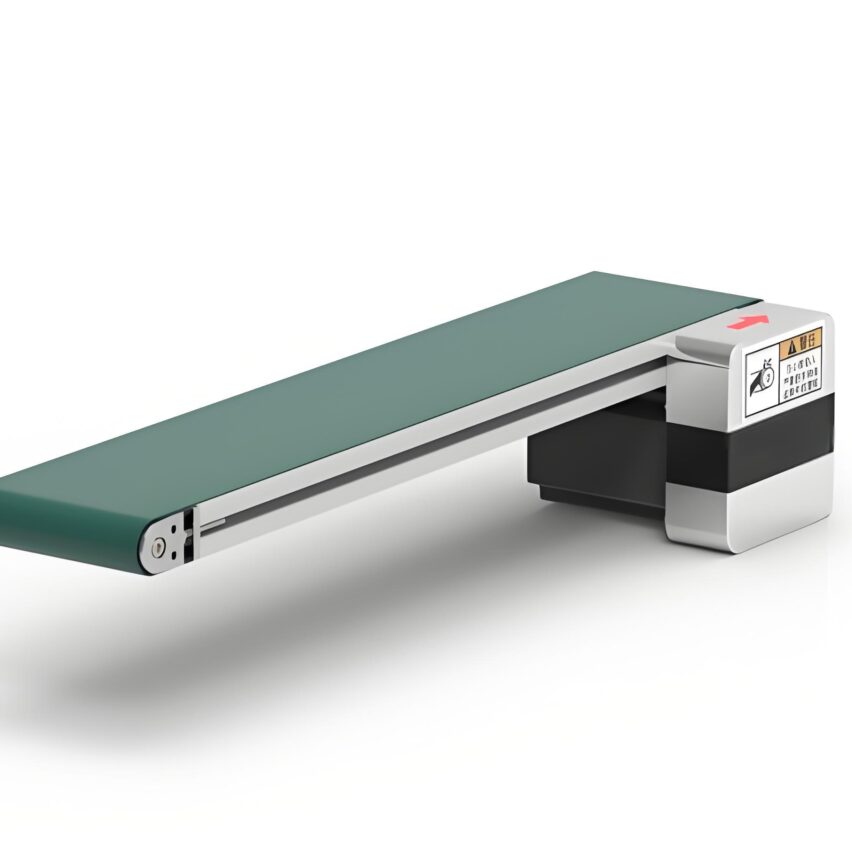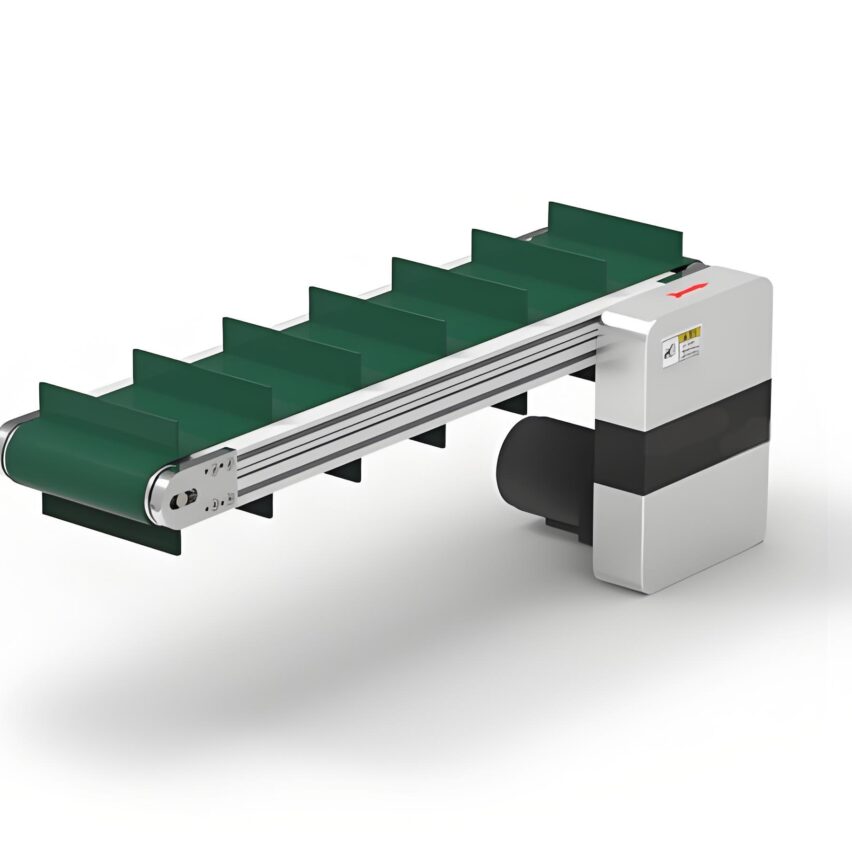In the assembly workshop of Kemu's 5G Smart Toilet Lighthouse Factory, AGV trolleys and multiplier chain tracks are interwoven into a flowing net. When the work plate carrying the semi-finished cover slides into the airtight test station, the blocker rises noiselessly, and the collaborative robot probe is precisely inserted into the interface - theThe whole set of movements is positioned in 0.5 seconds, while the parts in other sections of the production line are still running at 1.2 metres per second.This spectacle of "local pause, global flow" is the epitome of the reconstruction of modern manufacturing by speed chain technology. This spectacle of "local pause, global flow" is the epitome of how speed chain technology is reconfiguring modern manufacturing.
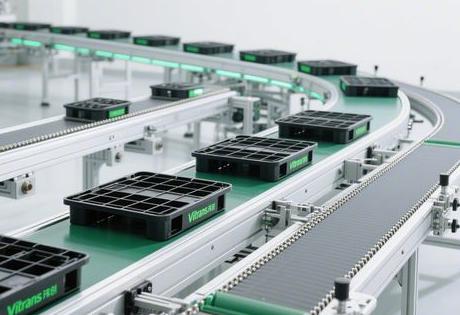
I. The Physical Code of Multiplier Chain: Geometric Leverage Drives Efficiency Revolution
The mystery of the multiplier chain is hidden in the geometric relationship between the differences in diameters. When the drive sprocket pulls the chain at speed v, the actual speed V of the work plate follows the formula:
V = v × (1 + D/d)
Where D is the roller diameter and d is the roller diameter. When D/d = 2 (i.e. 3x chain), the work plate speed can be up to 3 times the chain speed. This kind ofmechanical leverageThe essence of this lies in the motion superimposition:
- The overall movement of the chain provides the base speed v
- Roller rotation generates additional linear velocity (D/d) x v
- Combination of the two to achieve 2.5-3 times the speed of delivery
More subtle is the friction control design: the workpiece plate rolls forward on rollers when it is not blocked, and switches to sliding friction when it encounters a blocker. This dual-mode operation mechanism not only reduces chain wear, but also realises the decoupling of "conveyor-work".
II. Key technology modules: an industrial symphony of precision and synergy
1. Evolutionary iterations of chain systems
Modern multiplier chains have diverged into three types of specialised forms:
| typology | load capacity | growth rate than | core application |
|---|---|---|---|
| Light duty engineering plastic chain | ≤2200kg | 2.5 times | Precision assembly of electronic covers |
| Heavy duty steel chain | ≤4000kg | 3 times | Complete machine test station |
| Composite buffer chain | 1500kg | 2.8 times | Highly silent scenarios |
The practice of a sanitary ware factory in Zhejiang shows thatComposite chain with engineering plastic roller + steel roller, noise reduction 18dBIt also solves the problem of wear and tear on aluminium rails.
2. Precision coupling of guide and drive
Guideway accuracy directly determines conveyor stability, and key indicators include:
- straightness: ≤0.5mm/m (using laser calibration)
- levelness: <0.3mm/m (with levelling feet)
- radius of a curve: ≥3 times chain pitch (76.2mm standard chain needs to be ≥228mm)
The drive system, in turn, is operated by means ofDouble sprocket synchronisation technologyElimination of bias load: when the motor power is according to the formulaP=μQv/(η*1000)When calculating (μ is taken as 0.25, η is taken as 0.85), the configuration of 1:30 reducer can ensure that the shock of starting and stopping 10 metres of line body is <0.3G.
3. Nerve centres for accumulation and release control
In the production line of Kemu intelligent toilet, the "brain" of the speed chain consists of three layers of architecture:
plaintextmake a copy ofSensing layer: photoelectric sensor + pressure film real-time monitoring of the position of the workpiece plate Control layer: PLC analyses the blocker status and dynamically adjusts the number of accumulations. Decision-making layer: MES system schedules the blocking strategy of workstations according to the priority of orders.This system enablesBlocking response time compressed to 0.5 seconds for 24-station production lineThe overall efficiency of the equipment is 27% higher than that of the conventional production line.
III. The Golden Rule of Design: The Art of Balancing Speed and Stability
1. The "Law of Two or Eight" for Load Matching
- 80% Conventional LoadSelection of 2.5x chain (e.g. electronic cover assembly)
- 20% Heavy Duty WorkstationAdoption of 3x speed + steel wheels (e.g. mould closing of injection moulded parts)
- Extreme working conditionsDynamic speed regulation using variable frequency motors (5-18 m/s stepless adjustment)
2. Modular thinking in space compression
A new trend in multiplier chain configurations for smaller plants:
- Three-dimensional reflux design: Converts traditional flat return to double track, saving 40% floor space
- Flexible Workstation PitchAdjustable spacing: 1-1.5 metres, supports free combination of 3-6 workstations.
- Drive unit miniaturisation: 25 m single-stage drive with motors up to 2.2 kW
3. Digital twin pre-validation
Leading companies are starting to build "digital mirrors" of their multiplier chains in virtual space:
- Simulation of chain tension distribution by ANSYS
- Verification of accumulation and release strategies with Tecnomatix at different beats
- Actual operational data show that.Virtual Commissioning Reduces Equipment Failure Rates 75%
IV. Industrial change: from efficiency tools to manufacturing hubs
In the smart toilet industry, the multiplier chain is triggering a triple transformation:
- Reconfiguration of the production paradigm: Single-line flow integration of base-electronic cover reduces manufacturing cycle time from 1 day to 1 hour
- Quality Traceability Evolution: Workpiece boards are bound to RFID chips, 12 test data are directly connected to the MES database.
- Man-machine relationship metamorphosis: The operator changes from being a "line slave" to being a "pace-setter", adjusting the duration of blocking at the workstation.
What's more, it's worth paying attention toThe Convergence of Multiplier Chain and 5G: Kemu factory deploys 5G+industrial PON dual Gigabit network at the key nodes of the multiplier chain to collect parameters such as roller temperature and chain vibration in real time and build a predictive maintenance model.
V. Picture of the future: intelligent carriers beyond physical limits
When I look at the latest generation of multiplier chains, I see that they are pushing the boundaries of traditional conveyor systems:
- Dual-tracking of power supply - data: Aluminium rails embedded in copper rails for power supply, Fibre Channel for real-time data transmission
- AGV-enabling of tooling boards: Intelligent pallets with servo drives for three-dimensional spatial reorganisation
- AI dynamic scheduling: Predict the probability of blockage at the workstation through deep learning and adjust the chain speed in advance
These evolutions will give rise to a new model of "unconstrained manufacturing": an experimental factory in Dongguan.Magnetic Levitation Speed Chain has been realised to levitate the workpiece plate in the air.In addition, the speed is increased to 5 metres per second while completely eliminating mechanical wear and tear. When this technology is combined with digital twins, production lines in the physical world will truly become programmable fluid networks.
Comparison of efficiency (data from a sanitary ware factory)
Conventional belt line: single line daily capacity of 800 units, changeover time of 30 minutes
Speed Chain System: 2400 units per day in a single line, switching between 20 products in mixed production in <3 minutes.
Self-questioning: A look at the core value of the Speed Chain
Q1: Why is the multiplier chain particularly suitable for smart toilet production?
Precision electronic covers are subjected to 12 functional tests (e.g. 72 hours aging, 0.01 ml/min airtightness test).Accumulation function of the doubler chain allows the suspension of work at specific stations.while other work stations continue to flow to avoid stagnation of the entire line.
Q2: Can engineering plastic chains withstand heavy loads?
The composite design of the "Steel Bone and Plastic Skin": steel rollers for structural strength and engineered plastic rollers for silent operation. Tests have shown that10,000 hours of continuous operation under 2200kg load, deformation <0.3mm.
Q3: What is the ultimate limitation of the multiplier chain?
The current bottleneck inQuantum entanglement with speed and precision: When the chain speed > 2m/s, ±0.5mm positioning accuracy needs to sacrifice 30% speed. The breakthrough direction is magnetic levitation guideway + visual servo control, so that the accuracy under 5m/s high speed is improved to ±0.1mm.
Q4: How to apply it at low cost in small factories?
Lightweight aluminium profiles + modular stations" solution: 10m line cost can be controlled within 150k. The key is the adoption ofDouble sprocket split-side tensioning technologyThis is to avoid chain deflection caused by single-point drive.
